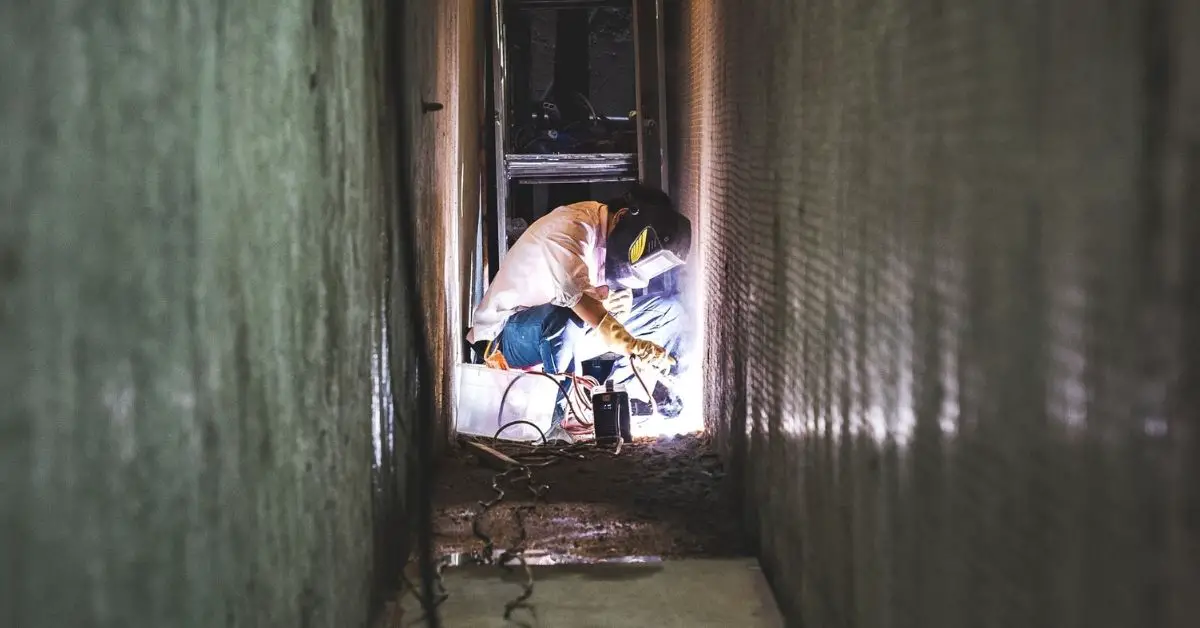Share

- 8 Steps On How to Weld Lead
- Step 1: Choose the right welding equipment
- Step 2: Set up your workspace
- Step 3: Put on your safety equipment
- Step 4: Grind away any excess metal at the joint site between two pieces of lead sheeting
- Step 5: Clamp the two lead sheeting parts together
- Step 6: Set your welder’s parameters
- Step 7: TIG weld the joint between the two pieces of lead sheeting
- Step 8: Finish up by grinding away any excess metal on the outside of your finished product
- Safety Tips When Welding Lead
- Suggested Post
Lead welding is an interesting skill to have. It’s also useful since lead has many advantages over other types of materials used in construction projects.
This article will go through the basics on how to weld lead and provide steps and safety tips along the way so you can get started with this practice!
8 Steps On How to Weld Lead
Step 1: Choose the right welding equipment
The first step is to choose the right welding equipment for the job. For lead, you will need a TIG welder with an AC output.
Step 2: Set up your workspace
Next, set up your workspace. Make sure that the area is well-ventilated and that there are no flammable materials nearby.
Step 3: Put on your safety equipment
Put on all necessary safety equipment, including a welding helmet plus leather gloves and boots. Also put on an approved breathing apparatus to protect yourself from harmful fumes created when you are TIG welding lead.
Step 4: Grind away any excess metal at the joint site between two pieces of lead sheeting
Grind away any excess metal at the joint site between two pieces of lead sheeting with a bench grinder or sander. You need to be able to fit both parts together tightly before proceeding further in order for them not to separate later while they are being welded together by heat during the TIG process step that follows this one. Then use the plumber’s tape to tape the pieces together if needed.
Step 5: Clamp the two lead sheeting parts together
Clamp the two lead sheeting parts together using a C-clamp or vise grip. This will help keep them in place while welding them together and minimize any movement that could cause an inconsistent weld.
Step 6: Set your welder’s parameters
Set your welder’s parameters according to the manufacturer’s recommendations. The most important settings for welding lead are the amperage (I) and voltage (V). Set the amperage at around 125 amps and the voltage at 15 volts for AC output.
Step 7: TIG weld the joint between the two pieces of lead sheeting
TIG weld the joint between the two pieces of lead sheeting, starting at one end and working your way across. Keep in mind that when you are welding with TIG, it is important to use a filler rod made out of the same kind of metal as what you’re already welding (such as steel for steel).
Step 8: Finish up by grinding away any excess metal on the outside of your finished product
Finish up by grinding away any excess metal on the outside of your finished product using an angle grinder fitted with a wire brush attachment or bench grinder/sander. Then be sure to remove all traces of the plumber’s tape if used earlier. Finally, cover or close off open windows since TIG welding lead emits a dangerous fume.
Safety Tips When Welding Lead
Lead welding is a process that joins two pieces of lead together by melting them with a torch and then pressing the pieces together. It is important to take safety precautions when welding lead, as it can be dangerous if done improperly. Here are some safety tips for welding lead:
- Make sure you are wearing the correct safety equipment, including gloves, goggles, and a face mask.
- Do not weld near flammable materials or in an enclosed area.
- Be careful when handling the lead welding torch, as it can get very hot.
- Only weld lead if you are experienced in this process. Welding lead is not recommended for beginners.
Welding lead is a process that is not used often in the average household, but it can be very useful when you need to join two pieces of lead together. This blog post has shared how to weld lead and safety tips along the way. Make sure you have all of your equipment ready and that you are in a safe area before beginning.
Suggested Post
- How to Weld Using a Car Battery: 7 Steps For Best Results
- How to Weld Zintec: 7 Simple Steps For Beginners



0 Comments